Natural Unsweetened vs Dutch-Process Cocoa Powder
What’s the difference between natural unsweetened cocoa powder and Dutch-process cocoa powder? Let’s find out!
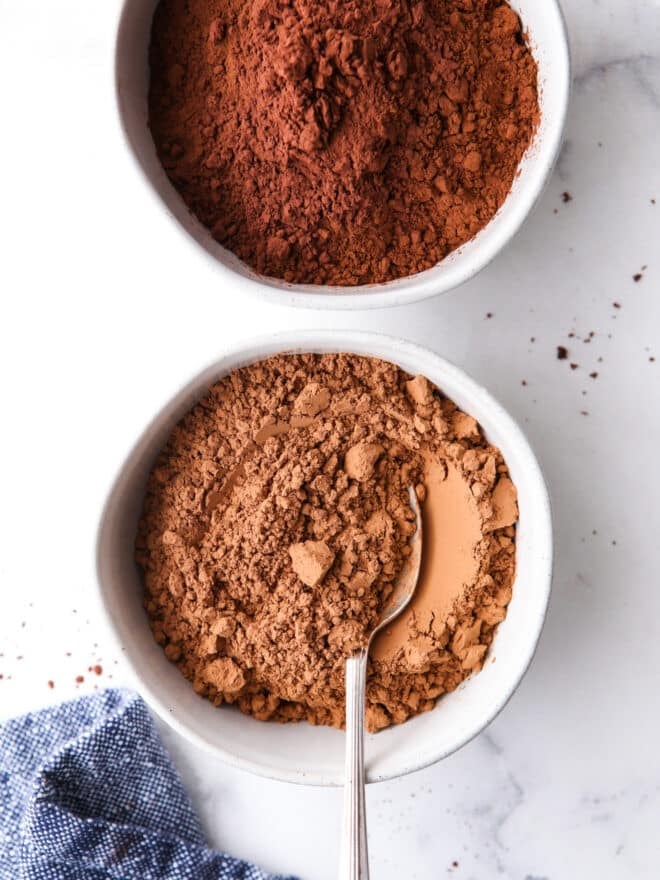
Maybe you’ve noticed ingredient lists asking for “natural cocoa“, “unsweetened cocoa“, or “Dutch-process cocoa” and wondered— what does it all mean? Are those all different? Can I use whatever cocoa I have in my pantry?
Well, let’s get to the bottom of it! In this post we’re going to break down the different kinds of cocoa powder, and how and when to use them.
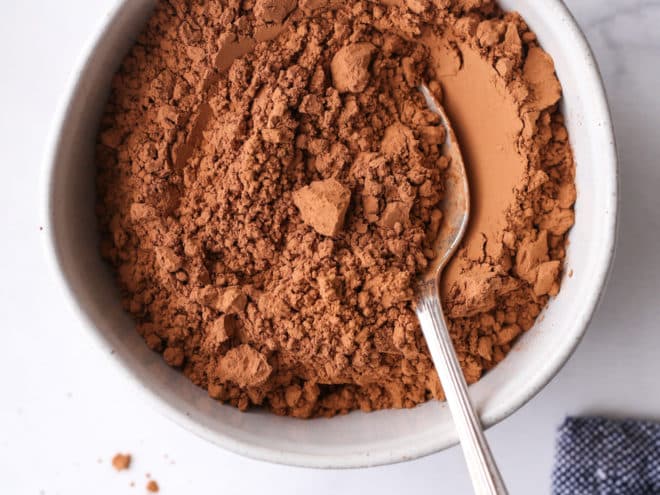
What is Cocoa Powder?
First, let’s talk about what cocoa powder actually is. During processing, cocoa butter is removed from the cacao (chocolate) beans and the dried solids left behind are ground into cocoa powder. Cocoa powder is basically the essence of chocolate, without any fat, sugar, or milk.
There are two different kinds of cocoa powder— natural unsweetened and Dutch-process. While you may see a lot of differences from brand to brand based on flavor, color, price, etc., they pretty much all fall under these two categories, or are a blend of the two.
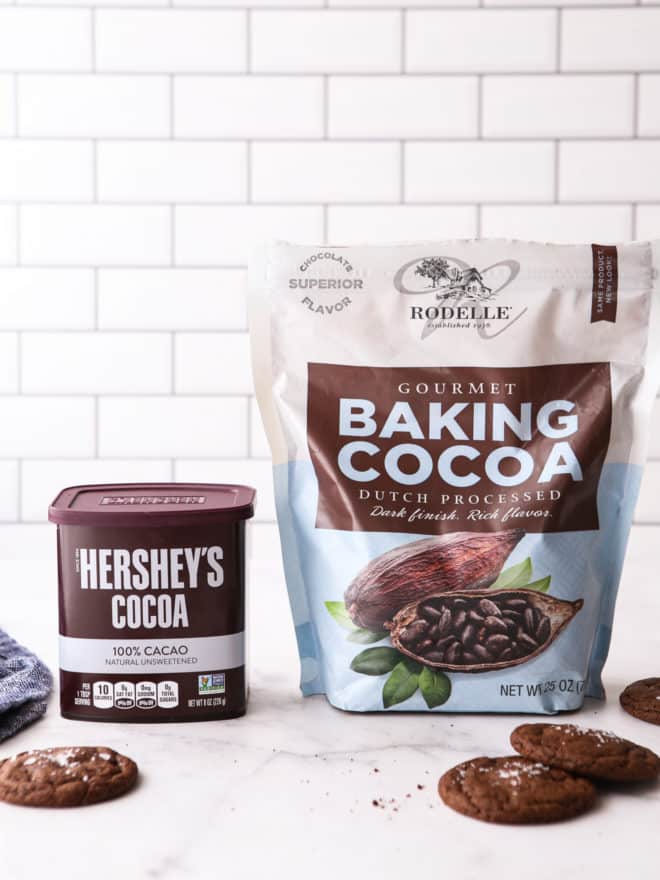
Natural Unsweetened Cocoa Powder
Natural or unsweetened cocoa powder is exactly what you get when the dried roasted cocoa solids are ground up, there is no extra processing (whereas there is more processing for Dutch-process cocoa).
Natural cocoa powder is naturally acidic, has a strong flavor, and has a light reddish-brown color. It’s also the most common type of cocoa powder, with brands like Hershey’s and Ghirardelli.
Dutch-Process Cocoa Powder
Dutch-process cocoa powder (sometimes also labeled as “alkalized” or “European”) is made by coating the cacao beans with an alkaline solution before it’s ground into a powder. This neutralizes the acidity in the cocoa powder, making it more milder in flavor and darker in color. Look for brands like Guittard and Rodelle.
I wouldn’t label either natural or Dutch-process as the “best” cocoa powder to use. They’re just different! Both have their place in baking recipes and both will produce great chocolate flavor.
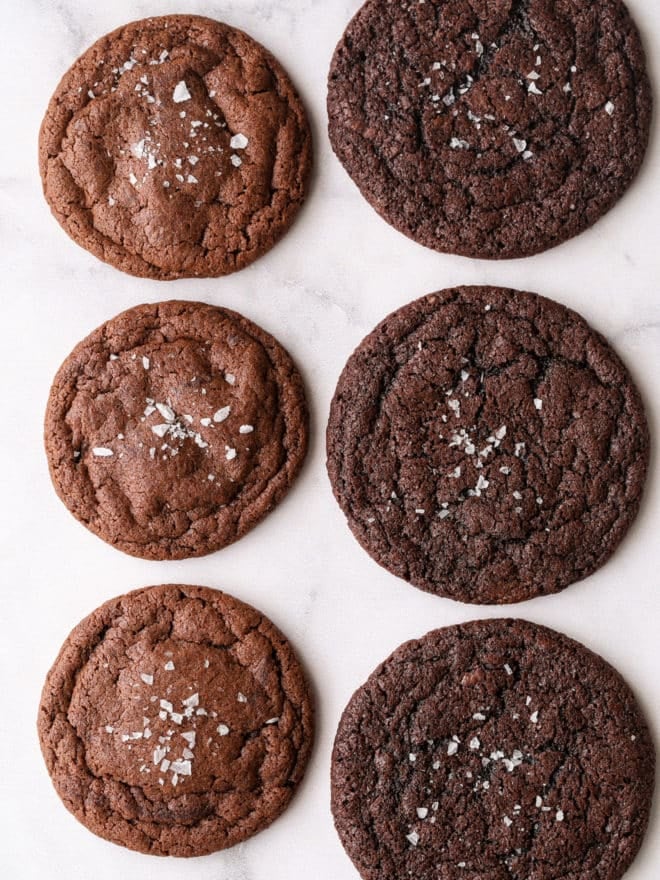
Does it Matter What Kind of Cocoa Powder You Use?
Most of the time, yes (but not always). Look at the cookies above; the only difference between the two is the kind of cocoa powder I used. On the left those cookies were baked with natural cocoa powder (which is what the recipe called for) and on the right I used Dutch-process cocoa powder.
Natural unsweetened cocoa powder is acidic, while Dutch-process cocoa powder is not, and so both will react differently with other ingredients in a recipe. In my cookies above, the ones on the left have risen properly during baking, while the other ones stayed flat with no rise at all.
When in doubt, use the kind of cocoa specified in the recipe. But if it isn’t clear, or if you’re wondering if you can get away with swapping one for the other, here is what you need to remember— look to see what kind of leavening (if any) the recipe uses, specifically baking soda or baking powder.
If the recipe uses baking soda, it will need the acid in natural cocoa powder to activate it and cause the cake, cookie, etc. to rise properly. If the recipe uses baking powder, or mostly baking powder with a lesser amount of baking soda, then you can probably use Dutch-process cocoa powder or natural cocoa powder.
If the recipe doesn’t have any leavening at all, such as for sauces, ice cream, pudding, etc. both natural and Dutch-process cocoa powder will work, so use what you have or prefer.
My Favorite Cocoa Powder
The kind of cocoa powder I use most often in my baking is Hershey’s Special Dark Cocoa, which is a Dutch-process cocoa. I like it because it’s in almost every grocery store, it’s very affordable, and I like the flavor. In my experience, I’ve also found that it doesn’t seem as “alkalized” as other Dutch-process cocoa powders. For example, I can use it in my soft and chewy chocolate cookies just fine without making any other adjustments.
If I’m concerned about it reacting properly with a recipe that uses baking soda, I will make a blend of it with Hershey’s Unsweetened Cocoa or swap for it altogether. I know it’s not the fanciest cocoa powder out there, but for me I think it has great chocolate flavor.
And now that you know a bit more about the different kind of cocoa powders, feel free to experiment with brands or varieties to find what you like!
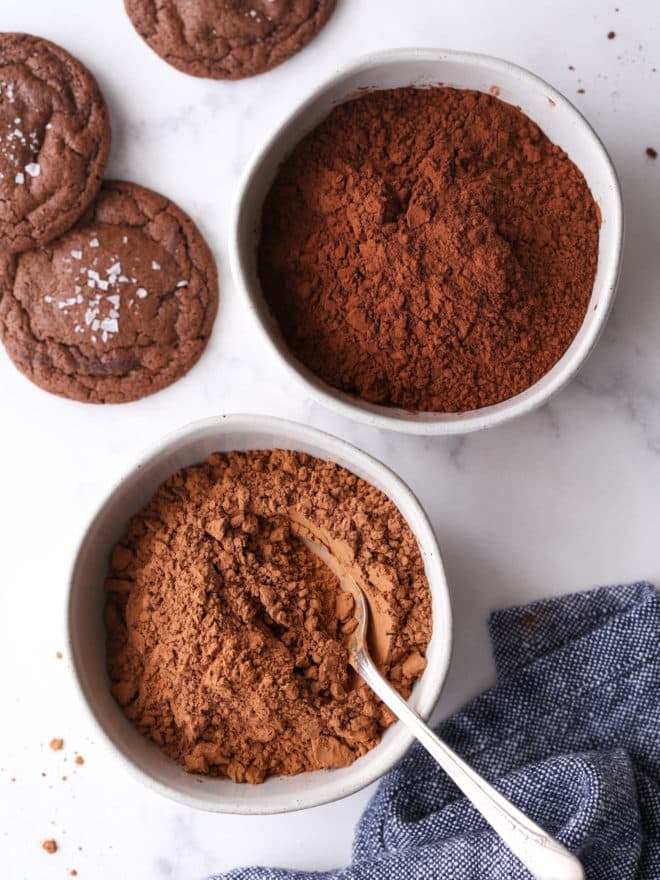
Want to Dig a Little Deeper?
This blog post is an overview on cocoa powders and the science behind how they’re used in baking, so if you want to learn more I encourage you to read the following sources. They helped me a lot as I wrote this post.
- The ABCs of Cocoa from King Arthur Baking
- What’s the Difference Between Dutch Process and Natural Cocoa Powder? from Serious Eats
- What is Cocoa Powder from The Spruce Eats
Shop Cocoa Powder

